Lots of trucking company recruitment ads talk about the freedom of the open road – but if you want a long and successful career in trucking, there are also strict rules and regulations you should follow. At the top of the list are hours-of-service (HOS) regulations. Violating these rules can cost you money, time and even your driving career.
What Are HOS regulations?
As a truck driver, your job requires you to cover long distances and deliver goods in a timely manner. But it’s also important to prioritize your own safety and the safety of others on the road.
Hours-of-service (HOS) regulations, set by the Federal Motor Carrier Safety Administration (FMCSA), govern how many hours drivers can work, how long they must rest and when breaks are mandatory.
HOS regulations help ensure that you are well-rested and alert while operating a commercial motor vehicle (CMV), reducing the risk of accidents caused by fatigue and promoting safety for both truck drivers and other motorists.
What are some of the key HOS rules?
- 11-Hour Driving Limit – Drivers may drive up to 11 hours after 10 consecutive hours off duty.
- 14-Hour Limit – Drivers must not drive beyond the 14th hour after starting their duty, including breaks and non-driving time.
- 30-Minute Break – Drivers are required to take a break within the first 8 cumulative hours of driving.
- 70-Hour Limit – Drivers cannot drive after 70 hours in 8 consecutive days.
The 7 most common HOS violations (and how to avoid them)
1. Form and manner issues (§395.8)
This violation occurs when your log is missing key details like the date, location or total miles traveled.
How to avoid it:
- Always double-check your logs before submitting them. Make sure every field is filled out correctly. This includes locations, odometer readings, tractor and trailer numbers, and duty status changes.
- Leave no blank behind. Fill out every line and if you don’t have use for one, put “N/A”.
2. Driver’s RODS not current (§395.8(f)(1))
Not keeping your Record of Duty Status (RODS) up to date can lead to serious problems during an inspection. A compliant logbook (or ELD) is a driver’s best friend – but only if it’s current!
How to avoid it:
- Update your duty status in real time. Don’t wait until the end of your shift to fill in details.
- During breaks or fueling stops, quickly review your log to ensure it’s accurate and current.
3. Missing 30-minute rest break (§395.3(a)(3)(ii))
Skipping a federally mandated 30-minute break within the first 8 consecutive hours? That’s a violation. Whether it’s due to tight schedules or simply forgetting, this is a common mistake drivers make.
How to avoid it:
- Set an alarm or reminder for your break if schedules are packed. Some ELDs have this built-in and will alert you.
- Plan rest stops strategically before hitting the 8-hour mark. Apps, maps, and GPS tools can help locate suitable break areas.
4. 14-hour and 11-hour driving limit violations (§395.3)
Exceeding the11-hour driving limit or operating beyond the 14-hour on-duty window can result in violations and lost time. These rules are in place to help prevent fatigue.
Remember:
- 11-Hour Rule: You can only drive for 11 hours after 10 consecutive hours off duty.
- 14-Hour Rule: You can’t drive after being on duty for 14 hours, even if some of that time wasn’t spent driving.
How to avoid it:
- Use trip-planning apps to account for traffic or delays and stick to a schedule.
- Stay aware of your on-duty clock by checking your ELD regularly.
5. False logs (false RODS) (§395.8(e))
Intentionally falsifying logs to cover extra driving time or skipped breaks is a huge no-no. Inspectors have access to GPS data and ELD records, so trust us, it’s not worth the risk.
How to avoid it:
- Always be honest. If something doesn’t line up in your log, explain it during inspections.
- Rely on automated logging systems to eliminate the temptation of editing records manually.
6. Not retaining the last 7 days of logs (§395.8(k)(2))
Drivers are required to keep records of their RODS for the past 7 days. During inspections, you may be asked to present them, and not having them on hand is a violation.
How to avoid it:
- Carry physical copies of your last 7 days of logs if you’re using paper logs.
- ELD users should ensure their devices store this data and can easily display it on demand.
7. On-board recording device (ELD) violations (§395.15)
Not having a properly functioning ELD, or failing to use one entirely, is a top violation in the modern trucking world. The FMCSA now requires ELDs for almost all CMV drivers to track driving hours.
How to avoid it:
- Regularly inspect your ELD for any malfunctions, and report issues to your employer.
- Keep at least 8 days of blank logs in your truck and start them right away if your ELD malfunctions.
What are the consequences of HOS violations?
Violating HOS regulations can lead to serious consequences that can affect every aspect of your trucking career. Here’s what’s at stake:
- Financial impact: Fines can be significant, and repeat violations could result in license suspensions. For businesses, these infractions can also lead to costly delays or disrupted operations.
- Reputation damage: A record of non-compliance can make it harder for drivers to secure new job opportunities. For companies, it can impair client trust and make it harder to secure new contracts.
- Operational challenges: Once violations are on record, drivers and companies may face increased inspections and monitoring, adding extra stress to daily operations.
Final thoughts
Keeping your driving record clean doesn’t have to be a grind. By staying informed and taking control of your HOS compliance, you’re safeguarding yourself and elevating the trucking industry as a whole.
Want to learn more about CRST’s dedication to its drivers’ safety? Visit CRST.com for more information.





